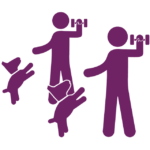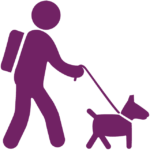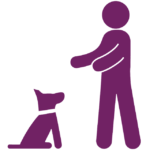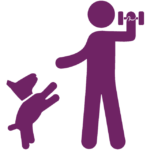Canine Good Citizen Test
There are 10 Canine Good Citizen test exercises that collectively demonstrate your dog is well-behaved and well-socialized, and earning American Kennel Club (AKC)’s Canine Good Citizen TItle is a great goal to set with your dog.
Not only that but, according to AKC “it [Canine Good Citizen Title] is also a prerequisite for many therapy dog certifications, as well as a great introduction to more advanced dog sports and activities. Some homeowners’ insurance programs even offer discounts for CGC dogs, and an increasing number of apartments and condos see CGC awards as a major bonus for becoming a resident.”








